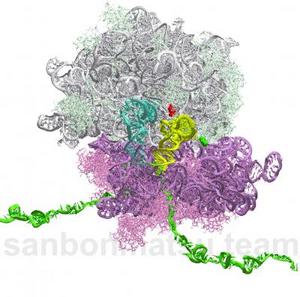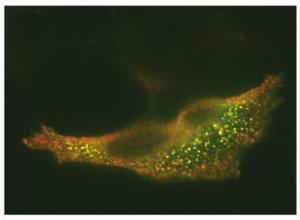Flash back three or four billion years - Earth is a hot, dry and lifeless place. All is still. Without warning, a meteor slams into the desert plains at over ten thousand miles per hour. With it, this violent collision may have planted the chemical seeds of life on Earth.
Scientists presented evidence today that desert heat, a little water, and meteorite impacts may have been enough to cook up one of the first prerequisites for life: The dominance of "left-handed" amino acids, the building blocks of life on this planet.
In a report at the 235th national meeting of the American Chemical Society, Ronald Breslow, Ph.D., University Professor, Columbia University, and former ACS President, described how our amino acid signature came from outer space.

|
| ©Los Alamos National Laboratory
|
| A simulated ribosome (white and purple subunits) processing an amino acid (green).
|

